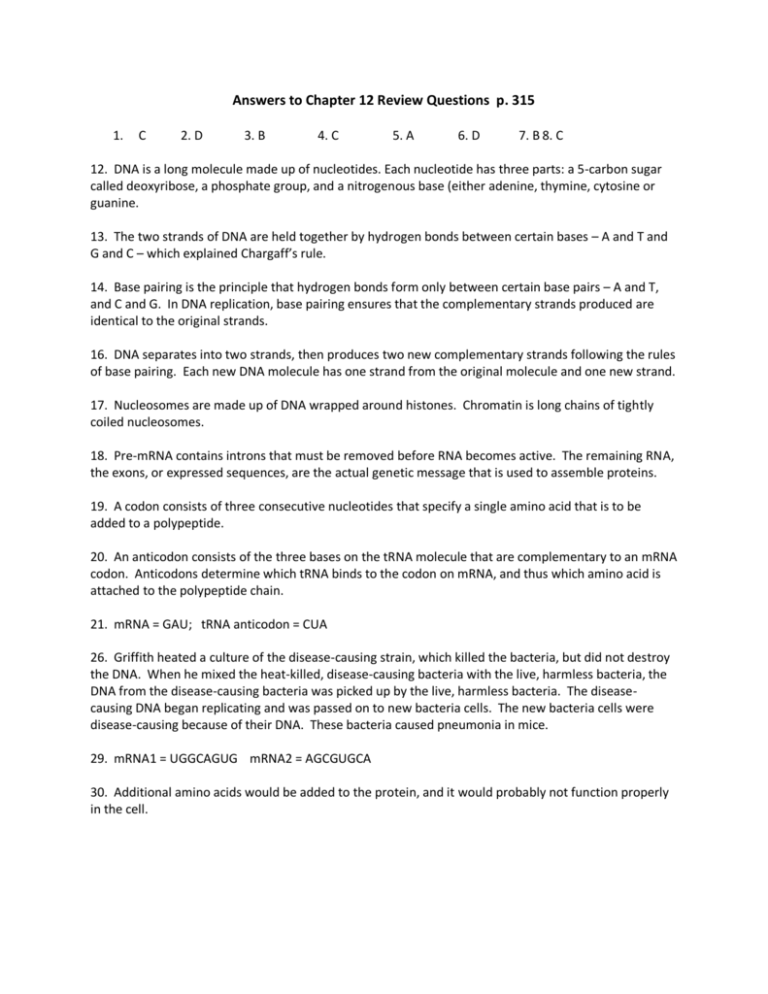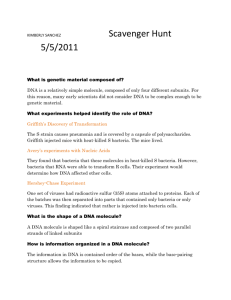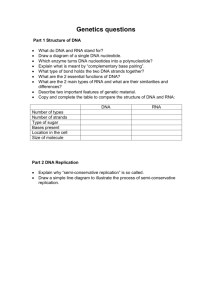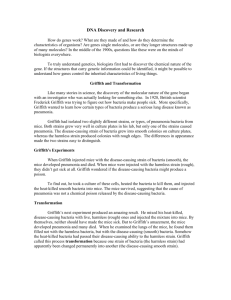Answers to Chapter 12 Review Questions p. 315
advertisement

Answers to Chapter 12 Review Questions p. 315 1. C 2. D 3. B 4. C 5. A 6. D 7. B 8. C 12. DNA is a long molecule made up of nucleotides. Each nucleotide has three parts: a 5-carbon sugar called deoxyribose, a phosphate group, and a nitrogenous base (either adenine, thymine, cytosine or guanine. 13. The two strands of DNA are held together by hydrogen bonds between certain bases – A and T and G and C – which explained Chargaff’s rule. 14. Base pairing is the principle that hydrogen bonds form only between certain base pairs – A and T, and C and G. In DNA replication, base pairing ensures that the complementary strands produced are identical to the original strands. 16. DNA separates into two strands, then produces two new complementary strands following the rules of base pairing. Each new DNA molecule has one strand from the original molecule and one new strand. 17. Nucleosomes are made up of DNA wrapped around histones. Chromatin is long chains of tightly coiled nucleosomes. 18. Pre-mRNA contains introns that must be removed before RNA becomes active. The remaining RNA, the exons, or expressed sequences, are the actual genetic message that is used to assemble proteins. 19. A codon consists of three consecutive nucleotides that specify a single amino acid that is to be added to a polypeptide. 20. An anticodon consists of the three bases on the tRNA molecule that are complementary to an mRNA codon. Anticodons determine which tRNA binds to the codon on mRNA, and thus which amino acid is attached to the polypeptide chain. 21. mRNA = GAU; tRNA anticodon = CUA 26. Griffith heated a culture of the disease-causing strain, which killed the bacteria, but did not destroy the DNA. When he mixed the heat-killed, disease-causing bacteria with the live, harmless bacteria, the DNA from the disease-causing bacteria was picked up by the live, harmless bacteria. The diseasecausing DNA began replicating and was passed on to new bacteria cells. The new bacteria cells were disease-causing because of their DNA. These bacteria caused pneumonia in mice. 29. mRNA1 = UGGCAGUG mRNA2 = AGCGUGCA 30. Additional amino acids would be added to the protein, and it would probably not function properly in the cell.





